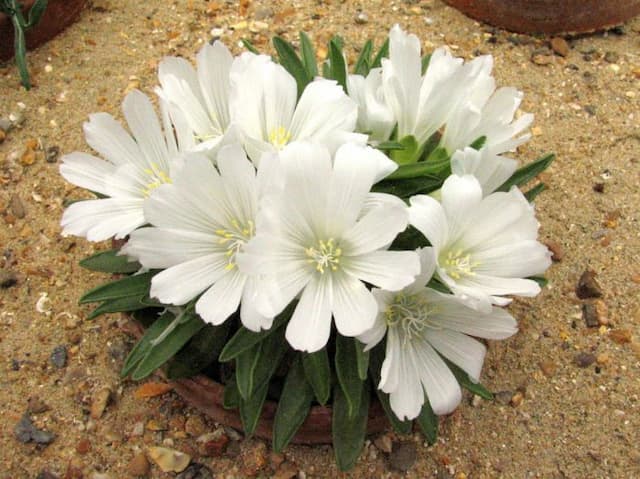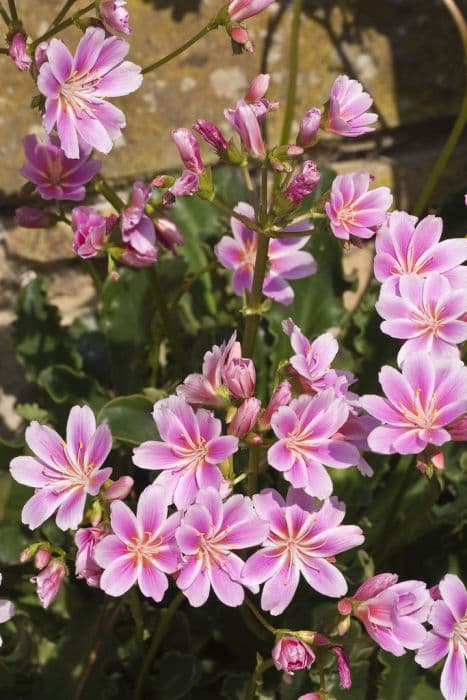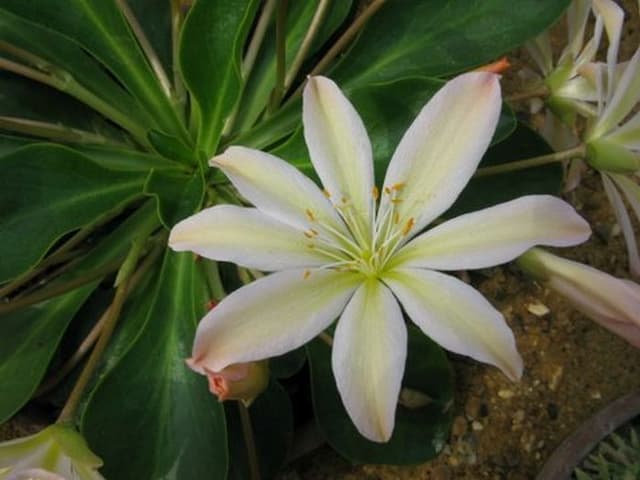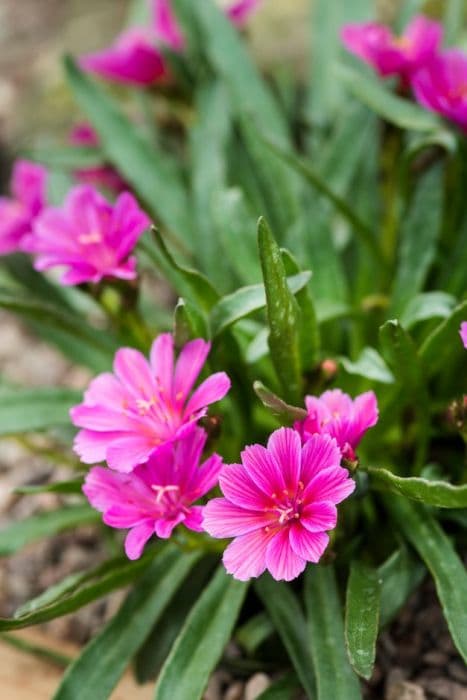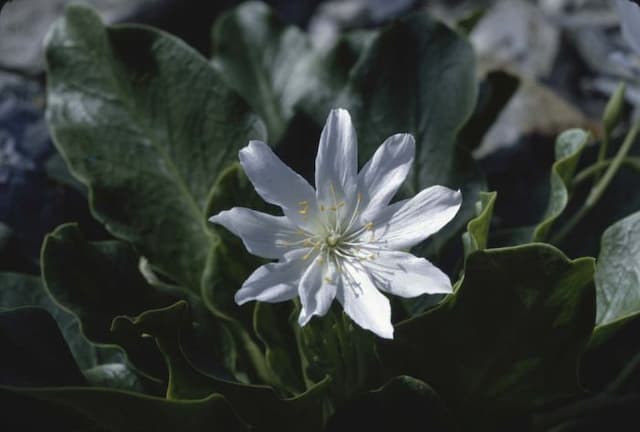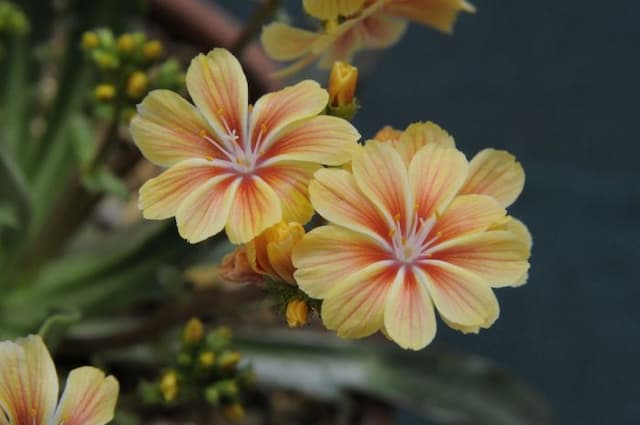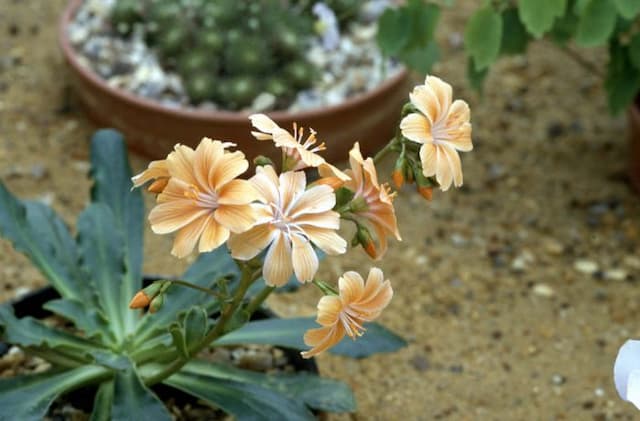Rose moss Sundial Series Portulaca grandiflora Sundial Series

ABOUT
Sundial Series are spreading annuals to 20cm in height, with fleshy, cylindrical leaves and semi-double flowers to 5cm across, in shades of red, purple, pink, yellow and white
About this plant
 Names
NamesFamily
Portulacaceae.
Synonyms
Moss Rose, Rose Moss, Eleven O'Clock, Mexican Rose, Sun Plant, Rock Rose, Purslane, Time Flower.
Common names
Portulaca grandiflora Sundial Series.
 Characteristics
CharacteristicsLife cycle
Annuals
Foliage type
Evergreen
Color of leaves
Green
Flower color
Varies
Height
6 inches (15 cm)
Spread
1 foot (30 cm)
Plant type
Herb
Hardiness zones
9
Native area
South America
Benefits
 General Benefits
General Benefits- Low Maintenance: Portulaca grandiflora, commonly known as Moss Rose, is drought-tolerant, requiring minimal watering.
- Heat Tolerance: Thrives in hot and sunny conditions, making it perfect for summer gardens.
- Easy Propagation: Moss Rose can be easily propagated from cuttings or seeds, allowing for quick multiplication of plants.
- Colorful Blooms: Offers a variety of vibrant colors that enhance the visual appeal of any garden space.
- Ground Cover: Its spreading habit makes it an excellent choice for covering bare spots in the garden.
- Long Bloom Period: Flowers throughout the summer until the first frost, providing long-lasting color.
- Attracts Pollinators: Blossoms attract bees, butterflies, and other beneficial insects to the garden.
 Medical Properties
Medical Properties- Anti-inflammatory: Portulaca grandiflora has been reported to contain anti-inflammatory compounds which may help in reducing inflammation.
- Antioxidant: The plant contains antioxidants that may help in protecting cells from damage caused by free radicals.
- Analgesic: Some sources suggest that Portulaca grandiflora may possess analgesic properties, providing relief from pain.
- Wound healing: Compounds within the plant may aid in the healing process of minor wounds or skin irritations.
- Antimicrobial: Portulaca grandiflora may have properties that inhibit the growth of certain bacteria and fungi.
- Diuretic: It is sometimes used for its potential diuretic effects to promote the release of excess fluids from the body.
- Immunomodulatory: There is some evidence to suggest that it may have effects on the immune system.
 Air-purifying Qualities
Air-purifying QualitiesThis plant is not specifically known for air purifying qualities.
 Other Uses
Other Uses- Moss Rose (the most common common name for Portulaca grandiflora) can be used as a living mulch to keep the soil moist and suppress weeds due to its dense and spreading growth habit.
- Because of its tolerance to drought and poor soils, Moss Rose can be employed in xeriscaping, a landscaping technique that reduces the need for irrigation.
- In sunny but otherwise barren urban spaces, such as rooftop gardens, Moss Rose can be utilized to add color and life without requiring extensive soil depth or maintenance.
- Its ability to thrive in harsh conditions makes Moss Rose an ideal choice for planting in cracks in sidewalks or driveways, where it can add beauty to typically mundane spaces.
- Moss Rose can be used in hanging baskets to create cascades of color, as its stems and flowers will spill over the edges beautifully.
- As ground cover in coastal areas, Moss Rose is salt tolerant and can add vibrant color to seaside gardens without being affected by the salty environment.
- Its flowers attract pollinators such as bees and butterflies, making it a good addition to gardens aiming to promote biodiversity and support the ecosystem.
- Edible landscaping is another unusual use, as Moss Rose's flowers are edible and can be used to add color to salads or as a garnish.
- Children’s gardens can benefit from Moss Rose due to its ease of care and the educational opportunity it provides in teaching about drought-tolerant plants.
- For artistic landscaping or garden mosaic projects, the diverse colors of Moss Rose can be planted in patterns to create a living tapestry effect.
Interesting Facts
 Feng Shui
Feng ShuiThe Moss Rose is not used in Feng Shui practice.
 Zodiac Sign Compitability
Zodiac Sign CompitabilityThe Moss Rose is not used in astrology practice.
 Plant Symbolism
Plant Symbolism- Perseverance: Portulaca grandiflora, commonly known as moss rose, is a hardy, drought-tolerant plant that can survive in challenging conditions, symbolizing resilience and the ability to persist through tough times.
- Love and Attachment: The vibrant and colorful blooms of the moss rose are often associated with feelings of love and deep emotional ties, making them a symbol of heartfelt attachment.
- Resourcefulness: Moss rose has a succulent nature, allowing it to retain water and adapt to arid environments, representing the trait of making the most of available resources.
- Beauty and Joy: With its wide array of bright colors, moss rose is a symbol of natural beauty and the happiness we find in life's simple pleasures.
 Water
WaterMoss Rose, commonly known as the Portulaca grandiflora Sundial Series, should be watered thoroughly but infrequently as it is a drought-tolerant plant. Allow the soil to dry between waterings to avoid overwatering. During hot, dry spells, watering once per week with approximately a gallon of water per square yard should suffice. Adjust the frequency according to rainfall and temperature, decreasing water in cooler, wet periods. In containers, check the top inch of soil, and if dry, water until excess drains from the bottom.
 Light
LightMoss Rose thrives in full sun where it can receive at least six to eight hours of direct sunlight daily. It performs best when placed in a spot that offers bright, unfiltered sunlight for most of the day, making it an ideal candidate for southern or western exposures. Avoid planting it in heavily shaded areas, as insufficient light can impact blooming and overall vigor.
 Temperature
TemperatureMoss Rose prefers warm environments with temperatures between 60 and 85 degrees Fahrenheit. It can survive minimum temperatures of about 30 degrees Fahrenheit but will not survive frosts or prolonged cold spells. Keeping it in the ideal temperature range encourages prolific blooming and healthy growth.
 Pruning
PruningDeadheading Moss Rose encourages further blooming and maintains the plant's appearance. Prune spent blooms periodically to stimulate new flower production. Minimal pruning is needed otherwise—simply shape or cut back any overgrown branches. The best time to prune is in late winter or early spring, before new growth starts.
 Cleaning
CleaningAs needed
 Soil
SoilThe best soil mix for Moss Rose, which is the common name for Portulaca grandiflora Sundial Series, is a well-draining, sandy or loamy soil with good aeration. An ideal pH range for Moss Rose is between 5.5 and 7.0. It thrives in a soil mixture that includes components like peat, compost, and perlite or coarse sand to ensure drainage and prevent water-logging.
 Repotting
RepottingMoss Rose should be repotted every 2-3 years or when it outgrows its current container. It's important not to over-pot; choose a new pot that is only slightly larger than the current one because these plants do well when they are slightly root-bound.
 Humidity & Misting
Humidity & MistingMoss Rose prefers a dry to average humidity environment and can tolerate arid conditions well. It does not require high humidity and excessive humidity levels can lead to fungal diseases.
 Suitable locations
Suitable locationsIndoor
Place in bright sunlight and well-draining soil.
Outdoor
Full sun, well-drained soil, water sparingly.
Hardiness zone
10-11 USDA
 Life cycle
Life cyclePortulaca grandiflora Sundial Series, commonly known as Moss Rose or Purslane, starts its life as small, black seeds that germinate in warm temperatures above 75°F. Upon germination, seedlings emerge with their first leaves, entering the vegetative stage where they swiftly grow fleshy, succulent stems and foliage. The plant progresses to the flowering stage under full sunlight, revealing vibrant, colorful blooms that can be red, pink, orange, yellow, or white. After pollination, typically by bees and other insects, the flowers produce tiny seed pods that contain numerous seeds. The mature plant will continue to bloom and set seeds throughout the warm season, often reseeding itself. As temperatures drop and conditions become less favorable, the annual moss rose completes its life cycle and dies, leaving behind seeds that will sprout with the return of warm weather.
 Propogation
PropogationPropogation time
Spring to Summer
Propogation: The most popular method of propagation for the Moss Rose, which belongs to the Sundial Series, is through seeds. Typically, Moss Rose seeds are sown in early spring, after the danger of frost has passed. To propagate, seeds are lightly sprinkled on the surface of a well-draining soil mix and gently pressed into the soil. They need ample sunlight to germinate, so they should not be covered with soil but can be lightly dusted with a thin layer of vermiculite to maintain moisture. Keeping the soil moist but not waterlogged is key for successful germination, which usually takes place within 7 to 14 days at temperatures around 75 to 80 degrees Fahrenheit (24 to 27 degrees Celsius). Once the seedlings have developed several true leaves, they can be thinned out or transplanted to give them ample space to grow.
